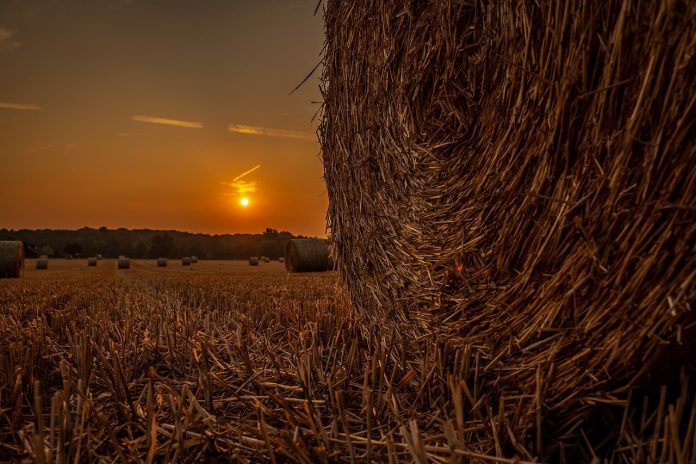Hay season is always a challenge. In most years it seems that the weather pattern never matches our grasses’ growth stage to harvest forage, as dry hay, at the peak of quality and quantity. We may luck out and get one of our intended cuttings “made right,” but it is rare to have the perfect hay season. Then there are years like 2024 when the weather was ideal for making hay all season, but there was little, or no, forage to harvest.
Livestock producers throughout much of Ohio, Pennsylvania and West Virginia may be feeling the heat from this year’s drought well into the winter, if not into next spring. Pastures and hay meadows became nonexistent throughout much of the region, forcing producers to dip into their scarce winter hay supply. Diminished hay supplies make the bales you have on hand a precious commodity.
Although aggressive culling may be needed in some situations, there are steps you can take to stretch your current supply and get the most out of what you have on hand.
Every step in the process of making hay, storing the hay and feeding the bales results in some level of dry matter loss. With the 2024 harvest season in the books, I would like to provide some thoughts on hay storage and feeding practices to limit hay wastage. A study conducted in 2019 at the University of Tennessee evaluated storage methods and dry matter loss for round bales. The hay was harvested in June, weighed and stored until January when they were reweighed to determine dry matter loss.
They found that bales stored on the ground with no cover lost 37% of the original dry matter content, stored on tires with no cover lost 29%, stored on the ground and covered lost 29%, stored on tires and covered lost 8%, net wrapped and stored on the ground lost 19% and stored in the barn lost 6%.
There aren’t many that are blessed with the ability to store all their hay under roof, but there are some standard recommendations for storing bales outside. The key component is to choose a site that is well-drained. The ground should remain firm for most of the year and sloped so it quickly sheds water following rain.
If you have issues locating an ideal area, you can consider installing a heavy-use pad to provide a solid base for your storage area. Bales can be stacked, and a rain tarp can be used to cover them, providing an additional shield to the weather.
If you are unable to use a multi-bale cover, bales can be placed in single rows, running north to south, with the flat edges butted tightly together, and about three feet between rows of bales. The north-south orientation and space between bales helps them to dry faster following a weather event. If you can’t place the bales north to south, place them up and down the slope so that they aren’t creating a water dam.
Your feeding method can produce dry matter losses as high, or higher, than your potential storage loss. Research from the University of Missouri in 1973 found that cattle can waste up to 45% of the hay they are provided when allowed unrestricted access to bales fed on the ground without a hay ring. To combat this, the simplest way to control loss is to limit the amount of hay provided at one time.
A separate University of Missouri Extension publication titled, “Reducing Losses when Feeding Hay to Beef Cattle” provided a comparison of potential dry matter loss between various feeding systems and the amount of hay provided. When providing a one-day supply in a hay rack, losses were less than 5%, where unrolling enough hay on the ground to last a week resulted in a 43% loss.
The main benefit is that by feeding a set amount of hay each day, you help your animals develop a feeding routine that will encourage them to consume a greater proportion of the hay provided. Although I couldn’t find a direct reference for this article, I have been told by a reproductive physiologist that feeding cattle their hay allotment later in the evening will encourage them to calve during the day more often.
There isn’t one feeding system that will fit every operation, but there are several key concepts to consider:
• Feed your outside stored hay first
• Sample your forages and supplement when necessary to ensure you are meeting your livestock’s nutrient requirements
• Feed hay in small amounts. Ideally this would be a one-day supply at a time.
• Utilize hay rings and/or bale feeders.
• Feed hay in well-drained areas and rotate locations through the winter-feeding area.
• If you utilize a bale grazing system, consider only setting out enough bales to meet your livestock needs for two weeks at a time.
Quality, home-raised forages are a key to profitability of most ruminant livestock operations. It is also important to protect the investment you have made to produce those forages by implementing management practices that conserve the quantity and quality of the forages provided to your livestock.
If you have questions about the various hay storage and feeding systems, I would encourage you to reach out to your local Extension professional.












